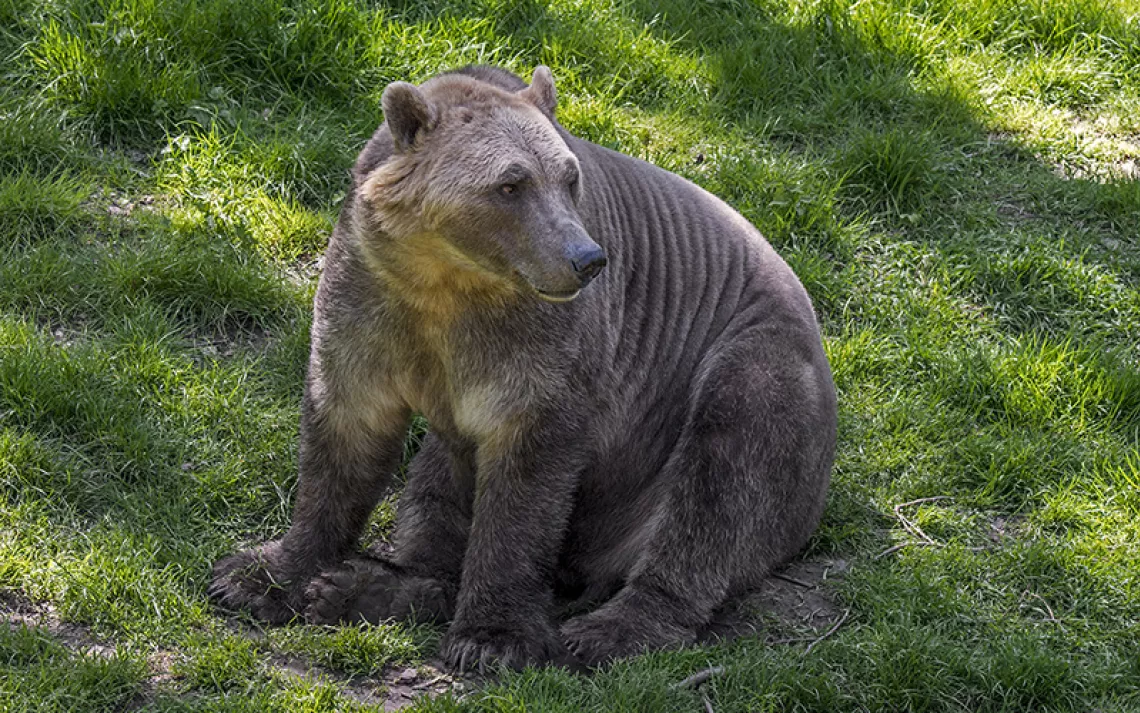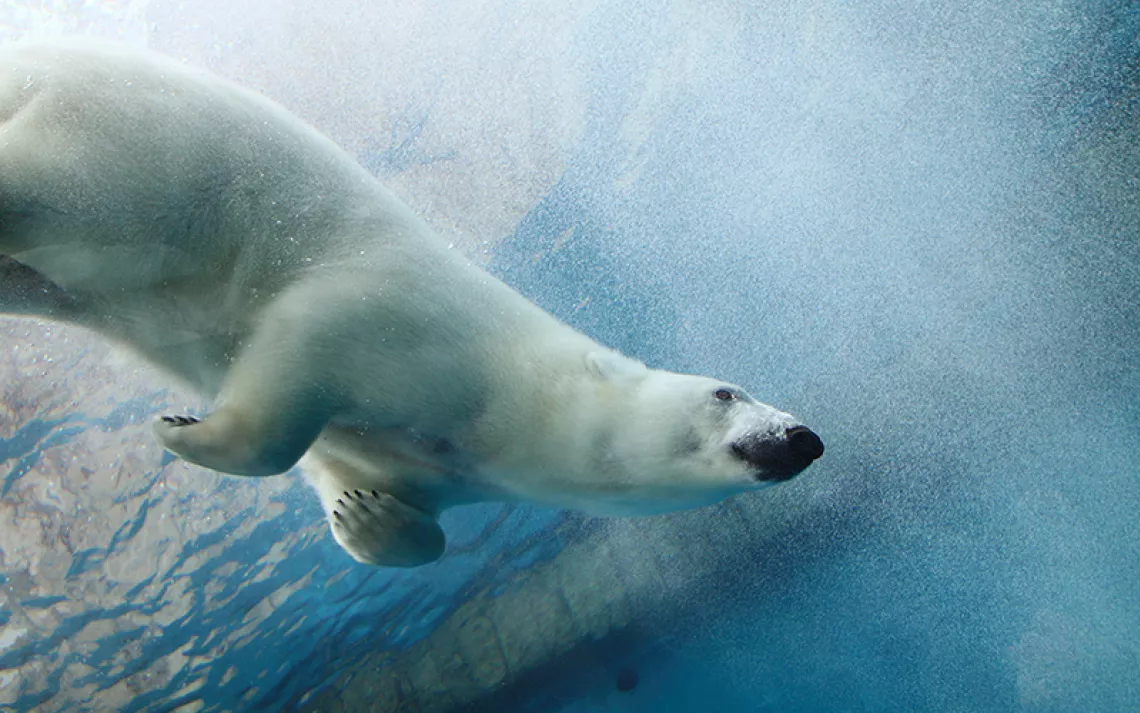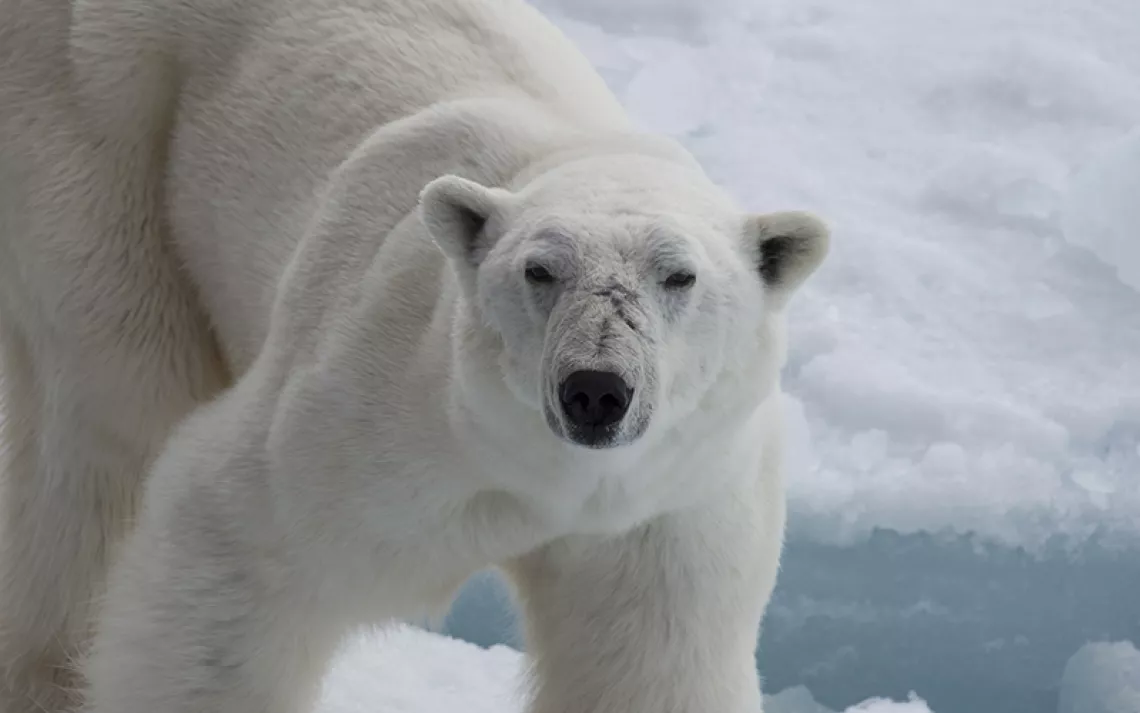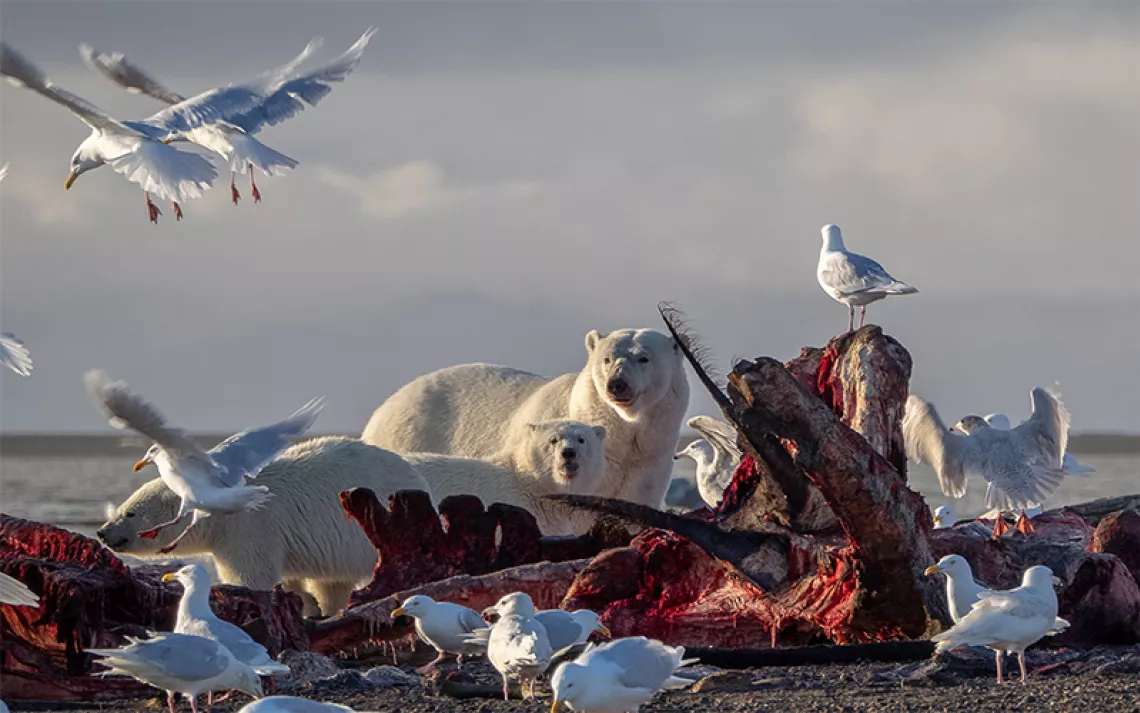The World's Most Famous Polar Bears Are Struggling to Adapt to Climate Change
Researchers say Churchill's polar bears are headed toward extinction if warming continues
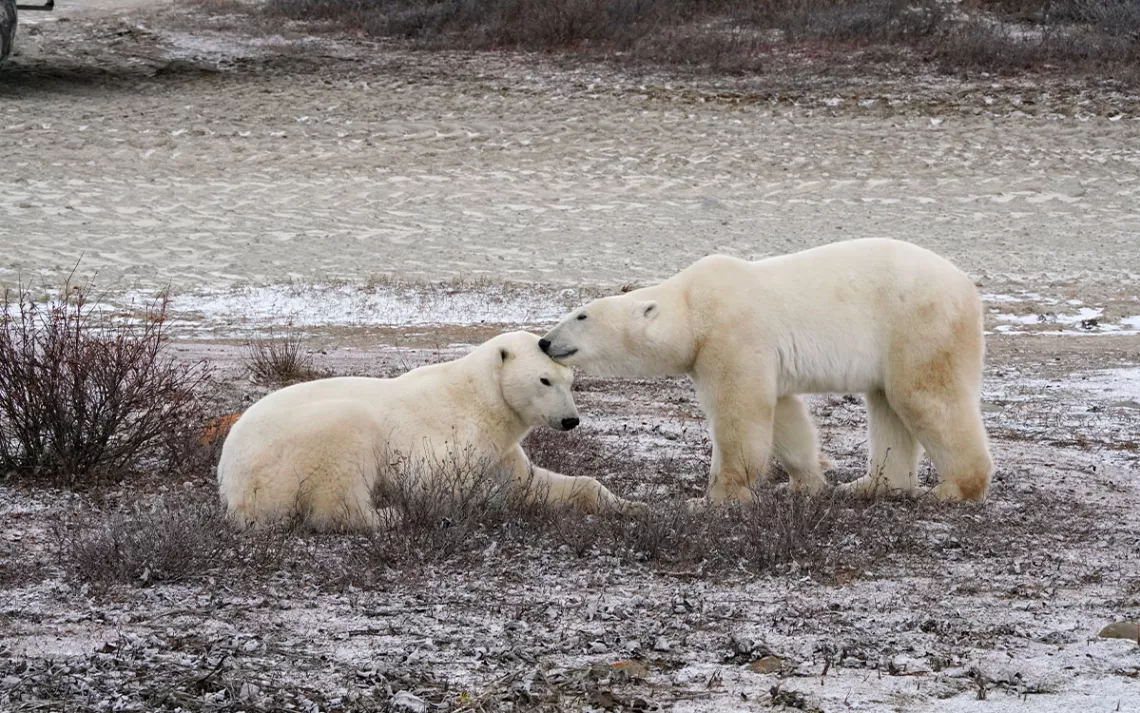
Polar bears wait for the sea ice to form on the edge of Hudson Bay in Canada. | Photo by Robert Annis
If you’ve ever seen a nature documentary about polar bears, odds are it was filmed near Churchill, Manitoba, in Canada. For more than 40 years, scientists, wildlife biologists, and filmmakers have traveled to Churchill—which calls itself the “polar bear capital of the world”—to study and document these magnificent creatures. Last year, I visited Churchill with Natural Habitat Adventures to photograph the bears myself … before it was too late. According to the most recent study by Polar Bear International (PBI), one of the largest nonprofits dedicated to protecting polar bears, that time may be coming much sooner than researchers initially anticipated.
What’s now the Churchill Wildlife Management Area was once a training ground for US and Canadian soldiers preparing for a possible Russian invasion. Today, massive, purpose-built vehicles that look like the product of an ill-fated one-night stand between a tank and a school bus ferry tourists across miles of rutted, Cold War–era gravel roads searching for polar bears. Bears have grown accustomed to the swarms of tourists in these vehicles. They barely gave us a second glance, seemingly content to observe us as a break from the monotony of waiting for the Hudson Bay to freeze.
The refrain echoed among the hundreds of wildlife tourists throughout Churchill was, "[W]e wanted to see them before they were gone.” Geoff York, PBI’s director of research and policy, has been studying polar bears for more than two decades. During our conversation, he acknowledged that the bears were in dire circumstances. Of the 20 polar bear populations spread across the Arctic, Churchill’s bears are among the farthest south and will likely be among the first to suffer the consequences of a rapidly warming planet.
According to a new study by York’s organization, other nonprofits, and multiple universities, if the world fails to abide by the Paris Agreement and temperatures rise 2°C above preindustrial levels, the Hudson Bay population will experience a localized extinction as soon as the next decade.
“The disappearance of the Southern Hudson Bay polar bears is imminent, with Western Hudson Bay not far behind,” said Julienne Stroeve, a University of Manitoba professor who is the study’s lead author. “Our research underscores the rapid changes human activity imparts to our climate. It's incumbent upon us to understand the impending impact on our natural world so that we can make policy decisions informed by science.”
During my time on the frozen tundra, many of the polar bears seemed lean and restless, like ill-tempered grandparents impatiently milling about a Cracker Barrel while waiting for their table to be ready. Most hadn’t had a substantial meal for at least five months. Smaller freshwater ponds across the tundra had frozen, but Hudson Bay remained open, illustrating the bears’ biggest impediment to survival. Without ice, the bears lose the ability to hunt ring seals, their preferred and most calorie-rich food source.
From 1980 to 1989, the average time between the Hudson Bay ice melt and freeze was 107 days. By 2015, the average had jumped to 130 days. When I left Churchill toward the end of October, it’d already been 135 days. The Hudson Bay finally froze the next month, a total of 164 days, the fifth-longest period since PBI started tracking in 1979.
When the thaw reaches 180 days, researchers estimate that at least 21 percent of adult bears and 63 percent of subadult bears could be lost. Already, the number of bears in the Churchill region has declined by more than 25 percent over the last five years alone, leaving as few as 600 polar bears in the region today. Researchers at PBI believe these bears may be on the verge of a “reproductive collapse,” when they aren’t healthy enough to produce offspring, leading to a substantial decline in birth rates.
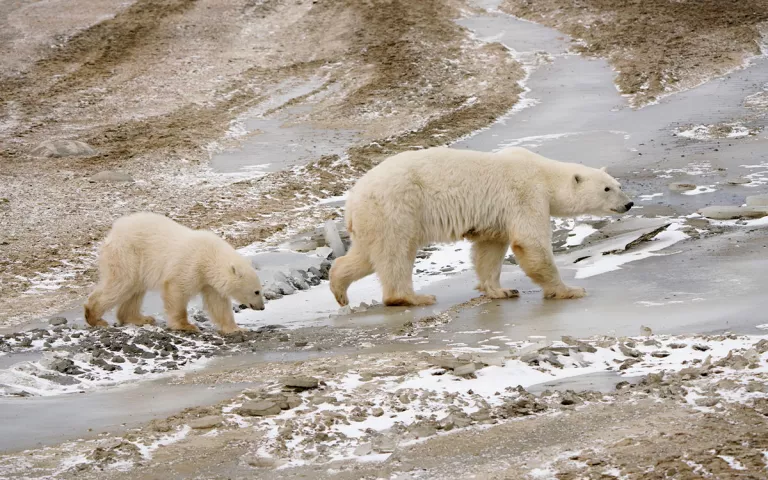
A polar bear leads her single cub around Churchill, Manitoba, on the edge of Hudson Bay. | Photo by Robert Annis
We’re already seeing previews of the bears’ dire future. Last year, York says, researchers and tourists alike noticed a mama bear with two cubs. The smaller of the two cubs steadily grew weaker and weaker until the mother and the cub’s sibling abandoned it. It died not long after.
According to the new study, nearly two dozen climate models predict the ice in Southern Hudson Bay will fail to freeze if the temperature rises to 1.6°C–2.1°C levels. At the same time, the Western Hudson Bay region becomes an unsuitable habitat at 2.2°C or 2.6°C. Those rising temperatures also wreak havoc on ring seals. The warmer temperatures mean seals will have a tougher time creating birthing dens, as more dens will be washed away by the rain that supplants the snowfall. Fewer ring seal pups mean the polar bears’ survival is even more fraught. As disastrous as these predictions sound, things could get way worse. The Arctic is warming at more than twice the speed of the rest of the planet, and climate models tend to be fairly conservative, York says, adding, “What we’re seeing right now is both worse and happening sooner than expected.”
For now, bears are doing what they can to survive. Some stay much later on the ice, while others double down on staying ashore. We found a scat filled with kelp recently left by a bear, which one researcher equated to eating a snack-size bag of chips. We saw a polar bear pushing down on an ice mound, mimicking one of their methods for hunting ring seals, trying to collapse it in order to snatch up and eat the animals denning underneath.
Camera crews have caught a small handful of bears hunting beluga whales and having various degrees of success. The industrious polar bears swim to rocks in the bay and wait for a pod of whales to swim past. When it sees a baby beluga, the bear attacks and attempts to drag the carcass back to shore. Although polar bears are intelligent creatures, so too are the belugas, who can simply avoid those spots where the bears perch. In essence, climate change is happening too fast for polar bears to evolve.
“True adaptation on that scale is impossible,” York says, for a predator like the polar bear. They’ve spent millennia evolving to hunt and eat ring seals; there’s no land-based food source that comes close to the caloric bonanza the seals offer.
If the Churchill polar bears die off or move on, a domino effect will occur. Researchers will lose one of the most valuable animal populations in the world. Churchill is a relatively affordable base for research given its proximity to North American universities and nonprofits; if the bears are no longer there, costs will rise across the board. Governments and conservation organizations won’t increase the money they devote to research. Instead, fewer projects will get funding, and less data will be accumulated.
Although Churchill does draw visitors for other reasons, such as the northern lights and beluga whale viewing, polar bears are the main attraction, bringing in more than $5 million in revenue annually. Not only will Churchill lose a major source of income but also polar bears migrating northward might find themselves in human-populated areas where the locals aren’t as well equipped to handle them. After generations of living with the bears, Churchill’s residents are well aware of how to coexist. Community leaders use a Bear Smart program that focuses on securing garbage, deterring bears from entering spaces where they’re not wanted, and teaching people what to do if they see a bear.
After my interview with York ended, I reflected on the cub, abandoned by its mother and sibling, dying and starving alone on the tundra. I broke down, weeping large, chest-heaving sobs. As the earth’s temperature continues to rise, the only pockets of polar bears will be found in the northernmost Arctic and zoos. “Fewer bears in fewer places make the species much more vulnerable to extinction,” York says.
If that happens, photos and nature documentaries will be all that's left.
(Full disclosure: Natural Habitat Adventures comped the author’s experience but had no input into the content of this article nor the study discussed.)
 The Magazine of The Sierra Club
The Magazine of The Sierra Club
